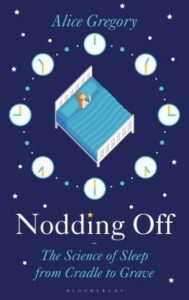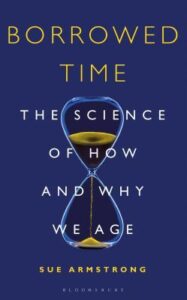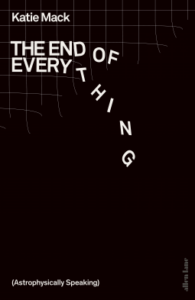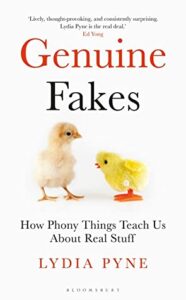Posted April 4, 2021 by Nicky in Reviews / 0 Comments
 Science Fictions: Exposing Fraud, Bias, Negligence and Hype in Science, Stuart Ritchie
Science Fictions: Exposing Fraud, Bias, Negligence and Hype in Science, Stuart Ritchie
I’ve been meaning to read this for a while, and happened to pick it up this week — just a week after doing a course on pharmacoepidemiology in the age of COVID, which involved a lot of discussion of how to evaluate papers, and responsible study design. I’m also studying biostatistics and epidemiology this year, of course, meaning that I understand more about statistics than I care to — which means, all in all, that this book slotted in admirably, though quite without meaning it.
The issue the book discusses is a serious one: through the current system of “publish or perish” and the way grants are awarded, tenure is granted, etc, poor science is becoming the way to do things. It’s more important to produce a positive result than to produce a correct one, and even good scientists are lead astray by the rush to publish impressive results from underpowered studies with small sample sizes and implausibly large effects. There are a fair number of innocent mistakes being made, along with the fraud, bias and hype, but it all adds up to a bit of a crisis. As students we’re taught all about how to recognise faulty studies and how to build good ones — but the scientific world we enter into, if we choose research, doesn’t build on those foundations.
The book is surprisingly readable, and I would recommend it to both laypeople and scientists. It offers some very good analyses of what can go wrong, and some suggestions for how we can fix that, move on, and create a better, more open scientific community. It’s possible that if you’re a scientist you’ll wince and recognise that you yourself fell prey to this — the temptation to report positive results and shelve the negative ones, perhaps — but the point isn’t that one should always have been perfect, just that we all have to hold our hands up and work to make things better.
Plus, for a layperson, you’ll gain a better understanding of when to be sceptical, and what the warning signs are.
Rating: 5/5
Tags: book reviews, books, non-fiction, science, Stuart Ritchie
Posted March 29, 2021 by Nicky in Reviews / 1 Comment
 Kindred: Neanderthal Life, Love, Death and Art, Rebecca Wragg Sykes
Kindred: Neanderthal Life, Love, Death and Art, Rebecca Wragg Sykes
That’s a pretty big title, particularly as it includes concepts that people doubt applied to Neanderthals (like love and art). Nonetheless, Wragg Sykes lives up to it, painting a picture of the current state of the art in understanding Neanderthals, their lives, their relationships to each other… and their relationships to us. I lost count of the number of times I just had to share a snippet or an image from this book with my wife, because it’s just so cool what we can know about these people, from the way they ate to their technology level.
One example: their technology level, since we’re speaking of that, was higher than you’d think — for example, they were creating a sort of glue from resin. Pine resin was the best, but other resin when mixed with beeswax gained similar properties, and they knew that and used it! There are multiple levels of technology there, from getting the resin out of the bark (which required a low-oxygen fire) to mixing it to applying it to attaching spearheads to hafts, etc.
I knew some of the things mentioned in this book, of course, particularly when it comes to how Neanderthals are related to us. But much of it was new, or more detailed than I thought, and Wragg Sykes’ interpretation of the evidence is fascinating. Even if you don’t go all the way with her in attributing complex thought and planning to Neanderthals (though I think the evidence tends in her direction), the evidence is astounding enough to keep your attention.
This is actually that rarest of things: a popular science book which I will keep, even though I probably won’t read it again, because I enjoyed it so much and I would like to have it to hand to refer to in the future.
Rating: 5/5
Tags: book reviews, books, history, non-fiction, Rebecca Wragg Sykes, science
Posted February 28, 2021 by Nicky in Reviews / 0 Comments
 Nodding Off: The Science of Sleep, Alice Gregory
Nodding Off: The Science of Sleep, Alice Gregory
This book is about the importance of sleep: the functions it fulfils for us, how that changes throughout our life cycles, and the consequences of not getting enough. It has a wealth of citations, and most of it was unsurprising to me, suggesting it’s a reasonable synthesis of the current state of our knowledge.
However, and this is a really big but, I lost count of how many times Gregory proclaims something and then admits in the next sentence or a footnote that it was a ‘small study’ and hadn’t been replicated in other studies, especially when she says it hasn’t been replicated in larger studies. The fact that she made it sound like these things were facts, when actually it was that shaky, gave me pause about more or less everything she said.
You can’t make big claims from small, underpowered studies. That’s just not how it works. They can be a testing ground, a starting point, but there’s no way you should be presenting them as fact in a pop-science book where people might actually think these are tried and tested facts, even if you explain the study is small. People just don’t grasp the significance of that (or rather, the fact that it’s probably not significant!).
I’ve also definitely had more engaging pop-science reads lately; Sue Armstrong comes to mind. Sleep can be a fascinating topic, but I found myself nodding off over Nodding Off.
Rating: 2/5
Tags: Alice Gregory, book reviews, books, non-fiction, science
Posted February 24, 2021 by Nicky in Reviews / 0 Comments
 Symphony in C, Robert M. Hazen
Symphony in C, Robert M. Hazen
Honestly, I could’ve picked this up just for the title, which I thought was clever. But of course, carbon is an intensely important element for life, so it ties in very much with my interest in biology — no carbon, no us! — and it didn’t seem like it’d be too far off the random path of my current interests. Which proved to be mostly true: I found it harder going than a book about biology, my preferred science, but Hazen’s enthusiasm for his subject carried me along to a great extent.
Often enthusiasm gives life to writing, but I did find that there were bits of this I got a bit stuck on just through not getting involved enough… and knowing that e.g. Richard Fortey can get me excited about rocks with the way he writes, that I do put down to a certain dryness in the writing. Oddly enough, it was the parts on biology I yawned through; I don’t need the facts to be new to me, but if you’re explaining to me about why carbon is the ideal element for life, I need you to make it more exciting than my textbook. (This may not be fair, as I find certain aspects of my textbooks very exciting. The membrane attack complex is a marvel! No, friends who have been subject to me exclaiming about the MAC — I’m not over it yet! Biology is amazing!)
Anyway, if you’re interested in carbon, in the history of how we understand carbon as well as the current state of the field, it’s not a bad read. It’s lacking in tables and images that can really talk people through the data rather than just explaining like a story, so it’s very pop-science in that sense, so I’m not sure how much of it will stick for me. The symphony conceit got old for me/didn’t always feel like the right way to balance/organise the material, but I learned some new things and cemented some others in my mind, and really, that’s all I ask.
Rating: 3/5
Tags: book reviews, books, non-fiction, Robert M. Hazen, science
Posted February 6, 2021 by Nicky in Reviews / 2 Comments
 Borrowed Time: The Science of How and Why We Age, Sue Armstrong
Borrowed Time: The Science of How and Why We Age, Sue Armstrong
I’ve read one of Sue Armstrong’s books before, on the role of the p53 gene in cancer, so despite aging and the science thereof not really being my thing, I thought I’d give it a try. And it was, in fact, riveting. I knew a little about some of the experiments — I read a paper on sirtuins and resveratrol for my final exam of my BSc, so that gave me some extra context — but much of the detail was new to me, and Armstrong explains things beautifully and keeps things very clear.
The answer to the question of how and why we age is, of course, “lots of ways and lots of reasons”, and the science isn’t all the way yet on understanding exact mechanisms and unpicking the many small effects that can add up over a lifetime. Armstrong avoids giving any false certainty, but makes it clear how people in the know expect things to go, and what they’re cautious about. Unlike some writers, she doesn’t intrude a lot into the narrative (we don’t have to hear stories about her neighbour’s sister’s dog’s brother, which some science writers lean on a bit too heavily), or when she does it feels relevant and useful to understand where she stands.
For a field with so many different puzzle-pieces, Armstrong really brings it together well, and I actually found myself reading this all in one day, in great big chunks. Now that’s good science writing!
Rating: 4/5
Tags: book reviews, books, non-fiction, science, Sue Armstrong
Posted February 6, 2021 by Nicky in Reviews / 0 Comments
 The End of Everything, Katie Mack
The End of Everything, Katie Mack
The End of Everything is about all the potential ways the universe can end. Katie Mack describes the various scenarios and why they’re likely or unlikely, the evidence for them, and what looking into these possibilities can teach us about the universe, even if they all turn out to be wrong. She has a fairly breezy style, but some of the actual physics is pretty hard to understand, so it’s to her credit that it feels comparatively light while also making what she describes clear enough.
Unfortunately, for me, physics is one of those topics that I don’t dislike because it’s hard — though I do find it to be difficult — as because it leaves me very much wondering what the point of everything is. Even biology will leave me feeling that way once I dig too deep, and this isn’t a dig at Mack at all… but it definitely made it harder for me to enjoy this book, because it does deal with those really big topics, and where some people can take joy in all the unknowns and the deep weirdness that we manage to exist at all, it really gets under my skin and makes me feel very small and pointless. I can’t really recommend that as an experience, but if entropy doesn’t get you down and a cold empty universe doesn’t bother you, then this will be much more to your taste!
Rating: 3/5
Tags: book reviews, books, Katie Mack, non-fiction, science
Posted February 4, 2021 by Nicky in Reviews / 0 Comments
 Genuine Fakes: How Phony Things Teach Us About Real Stuff, Lynda Pyne
Genuine Fakes: How Phony Things Teach Us About Real Stuff, Lynda Pyne
I didn’t really expect this book to be so riveting, but it really was. The central idea is a bit shaky, because Lynda Pyne’s definition of “genuine fakes” is very, very elastic: one example is lab-created diamonds, another is the Spanish Forger’s faked medieval illustrations, another is the faked Archaeoraptor fossil… The things that make each item “genuine” or “fake” are pretty flexible. The reasoning is most solid when it comes to art like the Spanish Forger’s work, which has now become desirable in and of itself. The reasoning for the Archaeoraptor fossil is basically “well, it’s made up of real fossils!” Yeah, who cares, those fossils have been ripped from their original correct context in a desperate attempt to deceive people and get more money. That’s not a genuine fake, that’s just a fake.
And then there’s a bit about wildlife documentaries and how they’re kind of fake (sometimes, depending on how they’re filmed) and kind of not, and the point kind of dissipated somewhere in there for a while in favour of just explaining how much money it takes to create a documentary like Blue Planet II.
That all said, though, even if Pyne’s examples don’t all hang together, I enjoyed her dissection of each item and the things it has to tell us. I didn’t know anything about the Spanish Forger before, and that was maybe my favourite thing to learn about. Interesting stuff here, just… not really very organised.
Rating: 3/5
Tags: book reviews, books, history, Lynda Pyne, non-fiction, science
Posted December 10, 2020 by Nicky in Reviews / 0 Comments
 Meteorite: The Stones From Outer Space That Made Our World, Tim Gregory
Meteorite: The Stones From Outer Space That Made Our World, Tim Gregory
Most of the science in this book is not my field at all (some touches on biology a little bit), so I come to this as a complete layperson… and I wasn’t entirely enthused by the idea of a book about meteorites, admittedly — or at least, not sure it would work out to be my kind of book — because it’s not my field, and that’s for a reason! But Tim Gregory writes so clearly and with transparent passion about what he’s doing that I was immediately absorbed. You can tell that he loves his subject, and is eager to communicate it — and he’s a great communicator. You can make any subject boring if you’re not good at writing, and likewise, I think perhaps you can make anything interesting with the right style.
As far as the actual science and history he discusses goes, I’m not really qualified to comment, but everything seemed to hang together and make sense. I didn’t notice anything that jarred against what I actually know or could quickly look up. If you’re interested in space, and in cosmochemistry, then I think this is probably one for you!
Rating: 4/5
Tags: book reviews, books, non-fiction, science, Tim Gregory
Posted December 6, 2020 by Nicky in Reviews / 0 Comments
 Metazoa, Peter Godfrey-Smith
Metazoa, Peter Godfrey-Smith
I really loved Godfrey-Smith’s Other Minds, so I was expecting something pretty readable and entertaining here. Godfrey-Smith is using the opportunity to dig further into how he thinks minds are formed, and it’s a mixture of science, speculation and philosophy, as was Other Minds. I found, though, that it just didn’t keep my attention very well. It felt like he was taking ages to dig into each point, and like this was a much more self-consciously Serious Book instead of something that shared the wonder and excitement of an animal he loves.
Where he does lean on science, I don’t know anything to his detriment, but it’s not really a field I enjoy very much. I did have a module in my undergrad called “the science of the mind”, but it didn’t really go into this area much at all. There are definitely interesting anecdotes, but sometimes I wanted him to dig into them more — for instance, split brain patients.
A bit disappointing for me, overall, though probably enjoyable for someone who likes grappling with the problem of the evolution of minds.
Rating: 2/5
Tags: book reviews, books, non-fiction, Peter Godfrey-Smith, science
Posted November 16, 2020 by Nicky in Reviews / 0 Comments
 Murderous Contagion: A Human History of Disease, Mary Dobson
Murderous Contagion: A Human History of Disease, Mary Dobson
I’d expected this to be right up my alley, but in the end, it was too general to really serve up the kind of titbits I’m looking for. Each chapter is a pretty high-level summary of the disease, its effects, its place in history and the current state of affairs, and though here and there some snippets were new to me, on the whole it just wasn’t deep enough for me. There’s some sourcing and recommended further reading, which is worth digging into, but it’s very much a layperson’s book.
As a layperson’s book, because of course I’m not a layperson in this field, it’s a pretty good overview of some very important diseases. The section on SARS and MERS is, well, not prophetic, but an intelligent person mentioning a warning they were aware of which we should all have heeded. The information in the book, as far as my own knowledge goes, is correct and interesting, though I wondered now and then if some things might be apocryphal (Albert Szent-Györgyi calling vitamin C “godnose”, for example).
I think the writing style might be a bit dry at times, though. I can’t tell if I thought so because so little of the information was new, or whether it was genuinely boring.
Rating: 2/5
Tags: book reviews, books, history, Mary Dobson, non-fiction, science
 Science Fictions: Exposing Fraud, Bias, Negligence and Hype in Science, Stuart Ritchie
Science Fictions: Exposing Fraud, Bias, Negligence and Hype in Science, Stuart Ritchie








